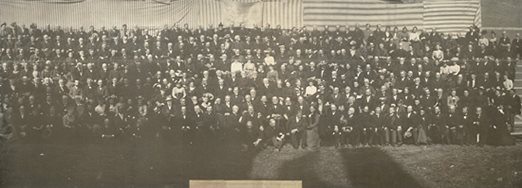Playing is Learning
19th Century American Missionaries in Syria and Lebanon
October 11th, 2016
| Ads | ||
|
Play the Challenge
|
||
|
A New Word is Coined A new Character is revealed A new Game is Afoot |
An Edutainment Adventure Based on Three Rounds of Investigations
|
|
|
Welcome to the World of PROFESsee™by seeCOSM™ PROFESsee™ is my title. I am the perpetual learner, in pursuit of knowledge, wisdom and truth. I derived my name from professor |
 |
|
|
Every story sure has a beginning, and for the missionary work in Syria and Lebanon – part of the old Ottoman Empire – the beginning, was creating the American Board of Commissioners for Foreign Missions (ABCFM) in 1810, at the Andover Theological Seminary in Massachusetts. One of the places ABCFM were particular about was Jerusalem. At such by 1818, there was already concrete plans and strategy in place. By 1819, two young missionaries – Levi Parsons and Pliny Fisk – departed for Jerusalem. However, the death of both Levi and Pliny in 1822 and 1825 respectively, and failure of several attempts and strategies put paid to the Jerusalem project in 1844. This background is important in the sense that it establishes the shift of importance from Jerusalem to Syria and Lebanon. In particular, Beirut became a focal point of this shift in attention. This was further enhanced by the measurable success ABCFM strategies and missionaries were experiencing in Beirut since being established in 1824. That event and the war in 1860 were two important events that shaped ABCFM’s strategy in the region. Also, other missionaries (Catholic missionaries since the 17th century and the Russian Missionaries since the 18th century) had already established strong networks and progress in Beirut was also influential – albeit of less importance. The war of 1860 in particular, brought the need to intensify the relief and missionary work. That prompted William McClure Thomson who entered Beirut in 1833 to call for the creation of a “Protestant College in Beirut”. Dr. Thomson had always been an advocate of setting up Beirut as central to the Anglo-American missionaries in the region. In his letter to Stuart Dodge – who would later become an influential cog when the college was eventually founded – in 1961, Dr. Thomson expressed his views on this matter. He succinctly expressed and described the setup of the school structure for maximum results, and lessening of a burden on the board. One could summarize the journey of the American missionaries by the significant landmarks they achieved. In 1948, the mission birthed the first native (Arabic was the means of communication) Evangelical Church in Beirut. The missionary work yielded the bible translation into Arabic, a work started by Eli Smith, and completed by C.V Cornelius Van Dyck after Eli’s death. Perhaps the biggest fruits yielded by the American missionaries in Syria and Lebanon in the 19th century was the founding of the Syrian Protestant College (later called the American University of Beirut) in 1866. Can you Zoom to the towns in today's challenge? Image courtesy of: http://nationalhumanitiescenter.org/tserve/nineteen/nkeyinfo/fmmovement.htm |
||
Latest News / Events
E-mail [email protected]
The Professee™ Newsletter Beta
http://www.seecosm.com/
http://www.seecosm.com/

